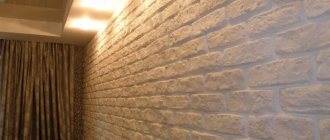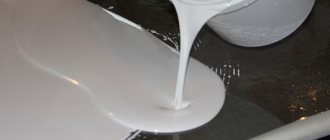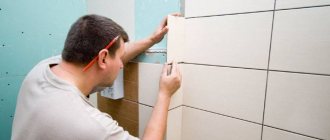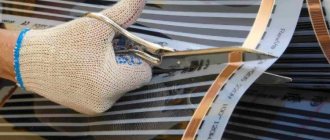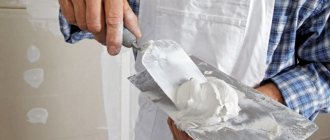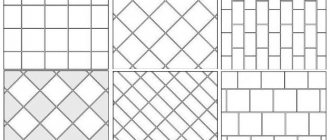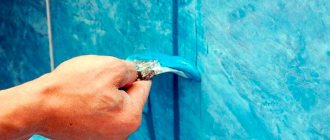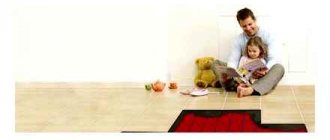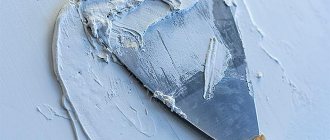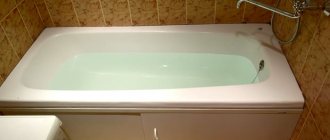Surely, each of us, at least once in our lives, while watching a movie or leafing through a glossy magazine, came across bar counters, accent walls or stone panels equipped with lighting. Natural stone with backlight looks unusual and incredibly luxurious, but, unfortunately, not all stones have the ability to transmit light; such minerals include: onyx, agate, quartz and other semi-precious stones used in interior decoration.
Composition of varnish for gypsum tiles
Varnishing is considered a necessary measure to protect the structure of alabaster in conditions of high humidity. The main disadvantage of this decor is its fragility. Coating with a special varnish ensures the appearance of a dense film on the surface of the gypsum tile.
In turn, they are divided into several categories:
- Compositions based on oil components;
- Special yacht varnish for plaster;
- Acrylic based protective composition.
Let's take a closer look at the advantages and disadvantages of each type of paint coating.
Manufacturing technology
Not only the characteristics of flexible stone are special, but also its production technology. It is made in the place of extraction of natural material - stone. Only harmonious sandstone cuts with a beautiful expressive pattern are suitable for its production. Next, this cut is ground until the surface is smooth.
Extraction of flexible stone in a quarry
The basis is textile material, which is coated with acrylic dispersion plasticizers, and the cut itself is attached to it. After some time, the textile material is removed, and the remaining section with an adhesive base is dried in the sun. Thus, the sandstone particles are tightly glued to the canvas, and the pattern remains unchanged.
Return to content
Oil varnish for plaster
These coatings contain artificial resins. The components are brought to an oily structure, and then combined in certain proportions with other materials. This structure ensures the appearance of a thin film on the surface of the product. After complete drying, the plaster decor is under reliable protection.
Subsequently, gypsum surfaces withstand physical and mechanical stress.
- Oil-based varnishes can be transparent or pigmented in different colors.
- Before purchasing, you need to consider the palette that is present in the room.
- To create an unusual texture, you can combine glossy and matte finishes.
- However, it must be taken into account that the use of a transparent composition darkens the plane by one tone.
When working with oil-based varnish, safety precautions must be observed. The fact is that such a composition emits caustic fumes during the drying process. To do this, it is recommended to use gloves, a respirator and goggles.
Hallway Design Ideas
Despite the fact that the decorative stone in the interior of the hallway itself looks stylish and beautiful, with small touches you can give it an unusual, more expressive look. For example, a contrasting contour will help make the masonry more voluminous. Spotlights can effectively highlight the cladding. They will distribute the light evenly and create accents in the right places. Mirrors, plants, and accessories play an important role in creating a unified composition. Moreover, natural, artificial or painted flowers are suitable.
If the design of the corridor is made in a classic style, then the stone will complement it, giving solidity and respectability. You can use it to lay out a floor, columns, or part of a wall. The main thing is to avoid pretentiousness and overload with details.
The framing of openings can be done chaotically, as well as by creating clear geometric shapes and color transitions. The design of the hallway with alternating sections made of stone and other types of finishing (wallpaper, plaster) is effective. The laying is done closely or with seams between the elements. The grout is done to match or contrast with the main color of the finish. Over time, it can be changed by updating the room.
Acrylic varnish for gypsum tiles
Before purchasing a varnish for coating gypsum tiles, it is necessary to take into account its characteristic features of the working composition. Most often, such mixtures simultaneously perform two functions. As a result, it is possible to protect the decorative plane and emphasize its aesthetic appearance.
Acrylic varnish after application forms a dense elastic film. This category of building material is considered a protective shield that provides additional strength to the artificial turf.
- The varnish layer provides moisture resistance, protects against ultraviolet radiation and the effects of household chemicals.
- There is no pungent odor when working with the material. The acrylic structure quickly penetrates into the gypsum elements.
- If there are errors, the plastic composition can be easily removed.
- To do this, use a solvent whose structure contains components that destroy acrylic resin.
If the acrylic varnish is too thick, you can dilute it with a small amount of water. Acrylic-based plaster varnishes are divided into several types:
- Matte;
- Semi-matte;
- Glossy.
If you use a matte composition to cover gypsum tiles, you will be able to create an imitation of a rough surface with elements of negligence. When applied correctly, the varnish composition dries quickly and fills small cracks in the structure of the plaster decor. After 5-6 hours it becomes transparent.
Semi-matte compositions for processing gypsum have the same features as matte varnish. The only drawback of this type is the possibility of white spots appearing after complete drying.
In some cases, the appearance of a gray coating was observed. The correct ratio of the palette of gypsum tiles and the shade of the varnish composition will help to avoid this trouble.
As for glossy varnish for gypsum tiles, when applied, the color palette of the decor becomes richer. After drying, a shiny film is formed on the surface, which will be greatly distorted under the influence of light rays.
Advantages and disadvantages of flexible stone
Based on all of the above, it is clear that flexible stone, although a fairly new material, has already shown itself well in the form of finishing and is gaining momentum in popularity among buyers. This is not surprising, given its obvious advantages:
- Compound. Flexible stone is not at all dangerous to human health - it is non-toxic, does not have an unpleasant odor and similar nuances. Does not harm the environment. This makes it possible to use it for a long time and in any room.
— Ease of installation. In general, you can do this yourself, provided you are careful and have patience.
- Easy to care for. Does not require any special care products or measures.
— Moisture resistance. Flexible stone can be used in rooms with high levels of humidity or steam - bathrooms, kitchens.
- Air permeability. It is also an important property that will protect your home from excess moisture, condensation or fungal growth. Flexible stone does not interfere with the movement of air in the room, allowing the walls to “breathe”, thereby creating a favorable microclimate.
— Fire safety. The material is not prone to ignition, even when exposed to direct flame. This makes it possible to use it for finishing stoves, fireplaces and similar objects.
- Versatility. Flexible stone can be used in almost any room or outside; it is suitable for finishing arches, columns, fireplaces - this material has enormous functionality and excellent properties, which allows it to be used everywhere.
- Durability. If you properly prepare the surfaces for installation and properly glue the flexible stone, it can remain unchanged for at least thirty years! This service life says a lot.
- Lightness. An undeniable advantage where there is a need for decoration with natural stone, but the design does not allow it to withstand its weight. Flexible stone will be an ideal replacement in this case.
- Spectacular appearance. Even in industrial production conditions, flexible stone turns out to be unique in appearance - the patterns exactly repeat the cut of natural stone. Finishing with this material will help create a unique and very attractive appearance.
Of course, among all the advantages, one cannot help but pay attention to the significant disadvantage of this material. It really only has one downside - its cost. The material is not cheap. Although, if you look from the other side, considering its properties and durability, the price is quite justified.
Today, flexible stone is an excellent alternative to heavy and even more expensive natural stone. Visually, flexible panels look very impressive, and if you use your imagination during installation, you can even get a unique design of absolutely amazing beauty. In addition, thanks to its properties and versatility, flexible stone has firmly taken a leading place among the leaders of finishing materials.
Liquid glass: types, scope of application, pros and cons
How is natural stone used in construction?
Features of yacht varnish
This category of building composition is considered the most reliable and in demand. Yacht varnish is intended for processing gypsum decorations. The advantage of this type is the formation of a dense film with water-repellent properties.
- Before use, the mixture is thoroughly mixed in certain proportions with the solvent.
- Next, using a thin brush, distribute each layer evenly.
- For the coating to be dense and reliable, you need to wait 20 to 24 hours.
- The drying speed directly depends on the humidity conditions and temperature inside the space.
To create an elastic shell on the surface of the decorative stone, it is recommended to use 2-3 layers. To increase adhesion between parts, you will need to use a primer or sandpaper.
In this way, it will be possible to correct minor defects on the plane. Treatment with yacht varnish makes it easier to care for the decorative surface.
How does it look in different rooms?
In bathrooms, if the budget allows, flexible stone is used to completely finish the walls and floors. If you don't want a stone room, combine flexible stone with paint, mosaic or wallpaper (in dry areas).
In the kitchen, a stone apron is most often made: it is not afraid of high temperatures, is easy to wash off grease, and looks impressive. To prevent the area above the work surface from looking too tacky, highlight the dining area with flexible stone.
In living rooms they make entire figurative compositions: you can depict mountains or any abstract figure. They are mainly used as a background for a TV or to decorate the surface behind the sofa.
The photo shows stone walls in the living room
Stone on the walls looks no less impressive in a study: it gives solidity and seriousness to the owner of the room and emphasizes good taste.
You can veneer niches or partitions. For example, use a niche for video equipment mounted to hide the wires.
Hydrophobic varnish for gypsum tiles
Before starting to treat an artificial surface made of alabaster or gypsum, it is recommended to apply a special hydrophobic composition. It has water-repellent properties that help protect decoration surfaces from excessive humidity and the growth of fungal infections.
After application, the solution does not form a dense film, but rather quickly penetrates into the deep layers of gypsum elements. It is recommended to cover the decorations in 2-3 layers.
Do not wait for the liquid to dry completely. Processing must be done on each side.
It is recommended to use a hydrophobic composition before starting installation work. To do this, use a soft roller or spray.
Loft
In this corridor, brick is the main element of the interior. The entire space can be free, without additional zoning and with a minimum of design elements. The surface of the hallway walls is made of homogeneous, monochromatic stone with uneven edges. Preference is given to solid shades of light, beige or dark gray, without bright inclusions.
Brick hallway in a modern apartment Source dizainexpert.ru Original hallway interior Source www.pinterest.com Built-in wardrobe made of raw brick Source yellowhome.ru
Practice shows: brick in the interior of a hallway can be used for two purposes:
- To focus the attention of others on the overall finishing concept.
- As an applied technical tool. For example, plastic that imitates brick, located at the bottom of the corridor wall, not only plays an aesthetic role, but also protects them from dirt. The most relevant solution is for families with small children.
Photo of varnish for gypsum tiles
Interior ideas
When choosing a brick finish to decorate a particular interior, it is important to choose the right area, as well as the color of the material, which will optimally suit the palette of the interior and furniture. Let's take a closer look at how to organize the decoration of different rooms with decorative bricks.
Decorative brick in the living room
This is a special room in the apartment that requires a careful approach to decoration - after all, this is where festive events with friends and relatives and family gatherings will be held. In newfangled interiors, you can often find living room designs with an emphasis on brick walls. It is worth noting that the masonry itself is an excellent decorative element that does not require additional decorations. If desired, you can display a gallery of family photographs, a display of artwork or posters on a brick wall.
You can choose any color of brick in the living room - the main thing is that it is in harmony with the interior. In this way you can decorate one of the walls or individual sections. The decoration of the room will be a brick fireplace or a niche in the wall, creating a special atmosphere of comfort. If the living room is combined with a kitchen, a good option would be a small brick wall that acts as a zone divider.
Decorative brick in the bedroom
Considering the fact that brick looks quite warm and attractive, it is perfect for decorating a bedroom. The material combines well with other types of cladding. Often, brickwork is used to decorate the wall at the head of the bed or the one on which the television panel is installed. If the bedroom is narrow and the bed is located with its back side to the long wall, it is this wall that is decorated with brick. This technique helps to visually move the wall away and expand the room.
Decorative brick in the hallway
In small corridor spaces, white decorative brick with a glossy surface will look best. This design will help increase the area and make the space freer, which is typical for modern minimalism, as well as the Scandinavian style.
It is better to decorate with red brick in fragments, decorating in this way corner areas, areas at the junctions of walls, arched areas and doorways. Masonry can take part in zoning a spacious hallway.
Decorative brick in the kitchen
The kitchen, even if it is quite spacious, is not recommended to be completely covered in brick, so as not to end up with a basement interior. It is much better to use masonry as a link between different types of finishes. Determining the wall where the brick will be located occurs according to the following principle: where natural light falls, there is a place for masonry. For a wall made of red brick, which has the ability to absorb light, it is better to consider additional lighting.
Since the hygroscopicity of the material does not allow it to be used as an apron, here you can use imitation cladding - PVC panels or brick-like tiles.
Decorative brick in the bathroom
The bathroom has a specific microclimate, and decorative brick is not the best option for cladding. In extreme cases, the masonry will need to be coated with agents that prevent the formation of mold, as well as antibacterial compounds.
From an aesthetic point of view, the combination of the rough surface of decorative bricks with snow-white plumbing fixtures has a very attractive appearance. Instead of brickwork, moisture-resistant wallpaper, tiles or plastic panels that imitate it are also used in bathrooms.
vote
Article rating
